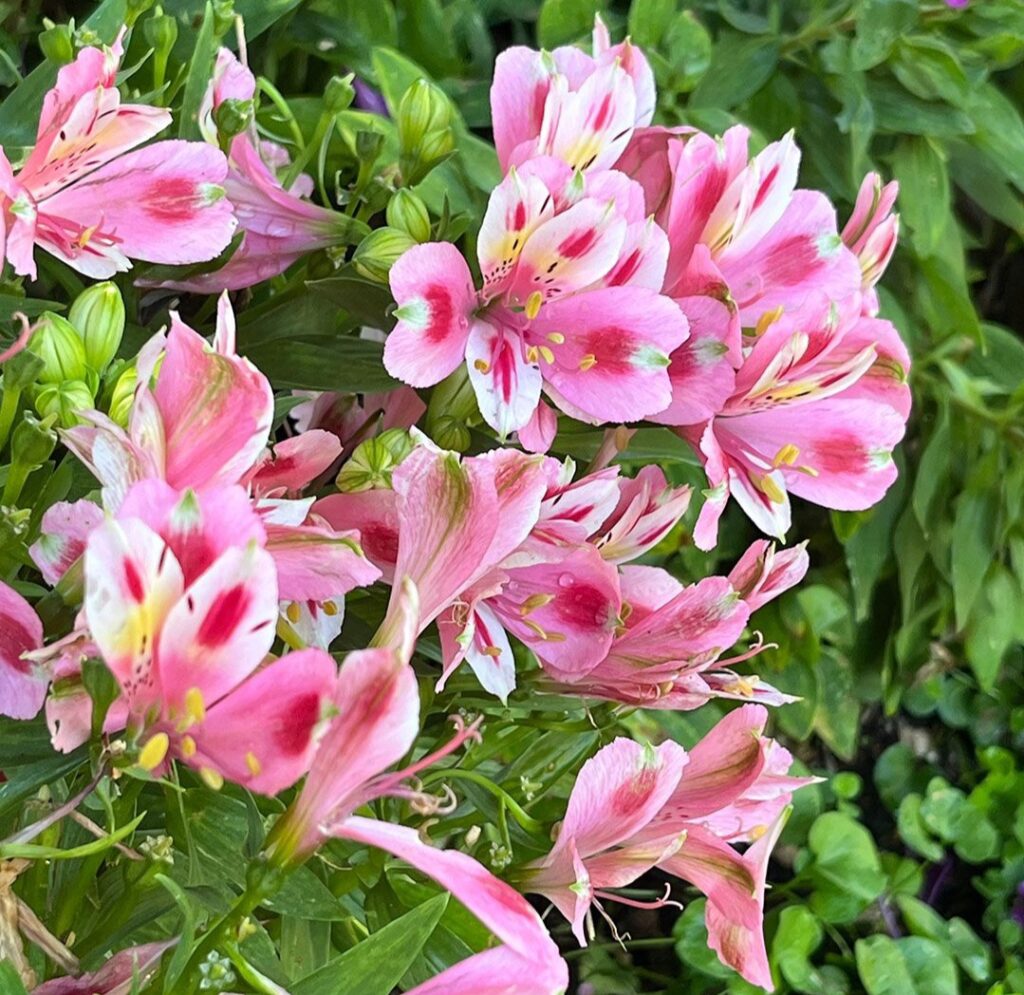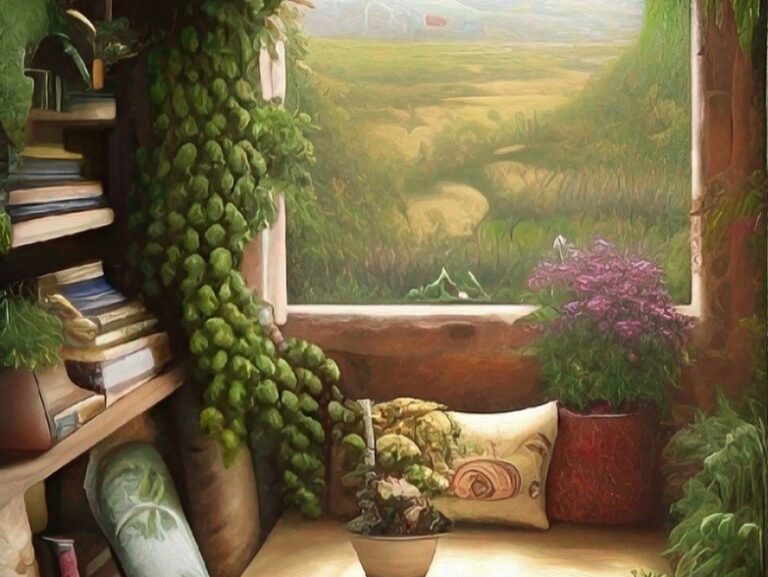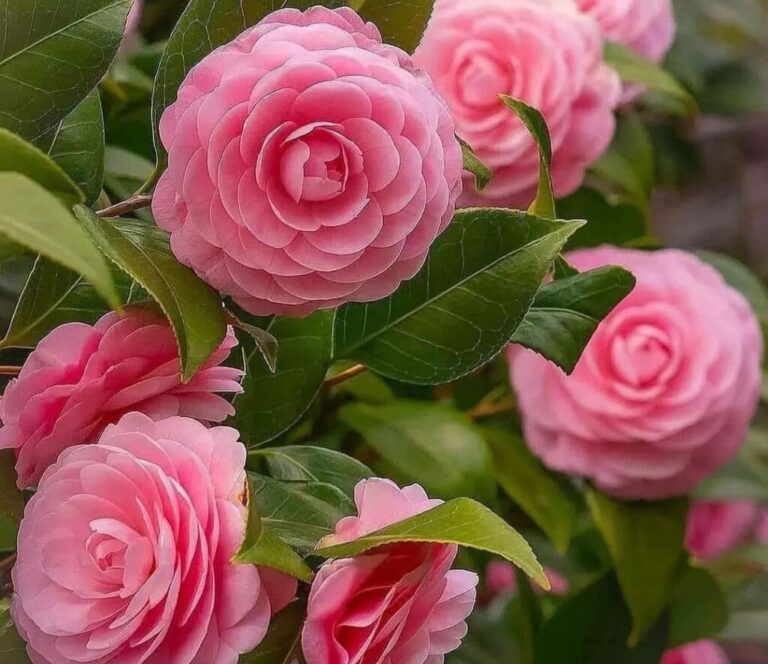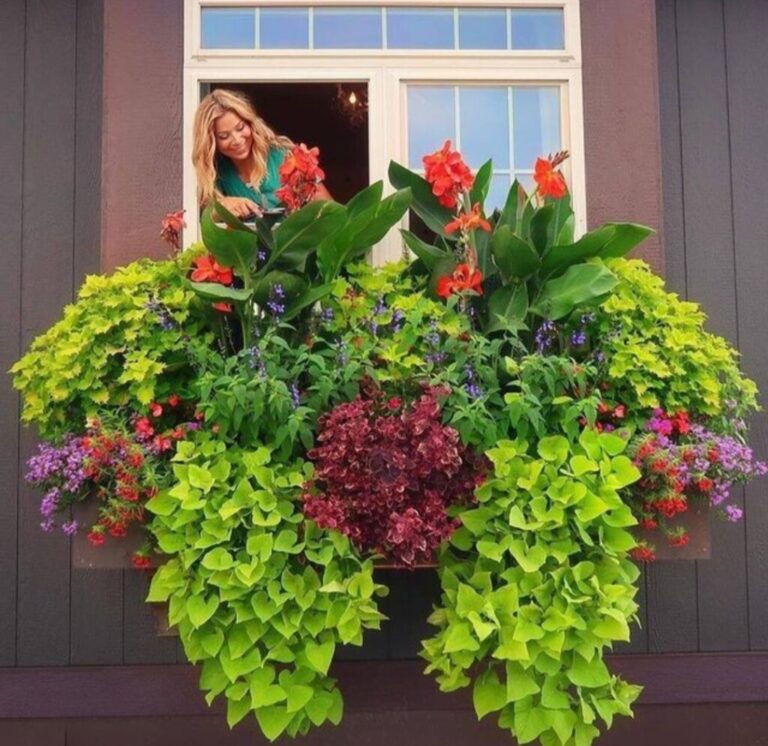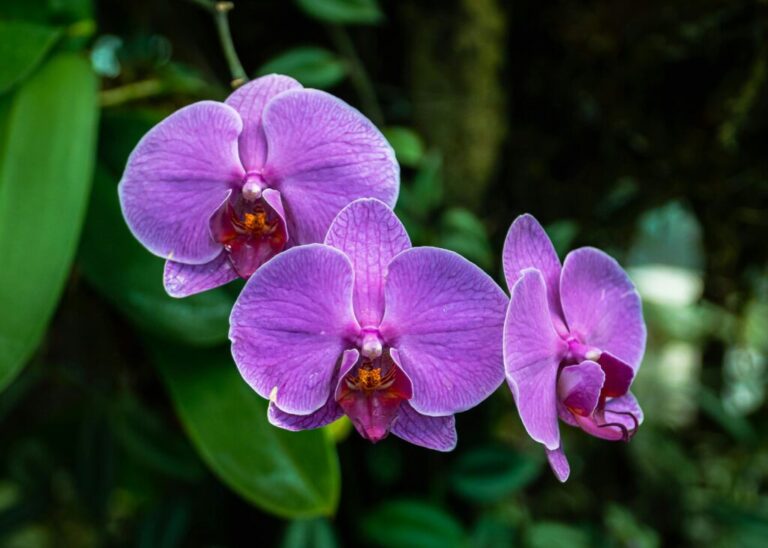- 1 Timetable for Peruvian Lily Growth & Care
- 2 1. Choose the Right Location
- 3 2. Plant at the Right Depth
- 4 3. Watering: Keep the Soil Moist, Not Wet
- 5 4. Fertilization for Healthy Blooms
- 6 5. Pruning & Deadheading for Continuous Blooms
- 7 6 Mulching for Moisture Retention and Temperature Control
- 8 7 Staking to Prevent Flopping Stems
- 9 8 Managing Pests and Diseases Naturally
- 10 9 Seasonal Care: Preparing for Winter Dormancy
- 11 10 Propagation: Expanding Your Garden
- 12 FAQS
Peruvian lilies (Alstroemeria), also known as Lily of the Incas, are stunning perennials that produce clusters of trumpet-shaped flowers in a dazzling array of colors, including pink, yellow, orange, red, and purple. These elegant flowers are a favorite among gardeners and florists alike due to their long vase life and prolific blooming nature. Despite their exotic appearance, they are relatively easy to grow, provided they receive the right care and conditions.
Many gardeners struggle with issues such as lack of blooms, yellowing leaves, weak stems, or pest infestations, which can make growing Peruvian lilies frustrating. However, with the right knowledge and techniques, you can avoid common problems and enjoy healthy, thriving plants that bloom year after year. In this guide, we’ll walk through the 10 best proven tips for Peruvian lily care, providing practical solutions to common growing challenges.

Timetable for Peruvian Lily Growth & Care
| Growth Stage | Care Requirements |
|---|---|
| Germination (2-4 weeks) | Moist, well-draining soil; indirect light; 65–75°F (18–24°C) |
| Seedling Stage (4-8 weeks) | Keep soil evenly moist; provide bright, indirect light |
| Vegetative Growth (8+ weeks) | Fertilize every 2 weeks; full sun to partial shade |
| Bud Formation (Early Spring) | Increase watering; apply phosphorus-rich fertilizer |
| Flowering (Spring-Summer) | Regular deadheading; consistent moisture |
| Dormancy (Fall-Winter) | Reduce watering; mulch in colder climates |
1. Choose the Right Location
One of the most crucial aspects of Peruvian lily care is choosing the right location for planting. These plants thrive in full sun to partial shade, depending on the climate. In cooler regions, full sun encourages strong growth and abundant flowering, whereas in hotter climates, excessive sun exposure can lead to leaf scorch and stress. The ideal planting spot should receive at least 6 hours of direct sunlight per day, but in areas with intense summer heat, providing some afternoon shade can prevent wilting and sun damage.
Soil quality also plays a major role in Peruvian lily care. These plants prefer well-draining, nutrient-rich soil with a slightly acidic to neutral pH (6.0-7.0). Heavy clay soil can cause root rot due to excess moisture retention, while sandy soil may drain too quickly, depriving the plant of nutrients. To create the perfect soil mix, add compost or organic matter to enrich the soil and improve its structure. A well-balanced soil mixture promotes healthy root development and ensures that Peruvian lilies receive the nutrients they need to produce vibrant blooms.
💡 Tip: If your garden soil is compacted or heavy, consider planting Peruvian lilies in raised beds or containers to improve drainage and aeration.
2. Plant at the Right Depth
Proper planting depth is essential for healthy root development and strong flower production. If the rhizomes are planted too shallow, they may become exposed to temperature fluctuations and suffer from moisture loss, while planting too deep can delay sprouting and weaken growth. Ideally, Peruvian lily rhizomes should be planted 3-4 inches deep and 12-18 inches apart to allow ample space for spreading.
If you are growing Peruvian lilies from seeds, you need to start them indoors 8-10 weeks before the last frost. The seeds require a cold stratification period to break dormancy, meaning they should be stored in moist soil in the refrigerator for 3-4 weeks before planting. Once germinated, seedlings should be gradually acclimated to outdoor conditions before being transplanted.
💡 Tip: Mulching around the base of Peruvian lilies helps retain moisture, regulate soil temperature, and suppress weed growth, creating an optimal growing environment.
3. Watering: Keep the Soil Moist, Not Wet
Watering is one of the most common challenges in Peruvian lily care. These plants require consistent moisture but are highly susceptible to root rot if overwatered. The best practice is to water deeply once or twice a week, ensuring that the soil remains moist but never soggy. Allowing the top 1-2 inches of soil to dry out between waterings helps prevent fungal infections and root damage.
During hot summer months, you may need to increase watering frequency, especially if the soil dries out too quickly. However, always check soil moisture before watering, as excess water can suffocate roots and lead to weak, discolored foliage. Using a drip irrigation system or soaker hose is an efficient way to provide slow, deep watering, ensuring even moisture distribution without oversaturation.
💡 Tip: Avoid overhead watering, as wet foliage can attract fungal diseases. Instead, water directly at the base of the plant to keep the leaves dry and healthy.
4. Fertilization for Healthy Blooms
Peruvian lilies are heavy feeders and require regular fertilization to support their rapid growth and continuous blooming cycle. A balanced fertilizer with an NPK ratio of 10-10-10 is ideal for overall plant health, but for maximum flower production, a phosphorus-rich fertilizer (such as 5-10-10) can enhance blooming. During the active growing season (spring to summer), apply fertilizer every 2-3 weeks to encourage strong stems and vibrant flowers.
Organic fertilizers, such as compost tea, liquid seaweed, or fish emulsion, are excellent alternatives that improve soil fertility while boosting plant immunity. Be cautious with high-nitrogen fertilizers, as excessive nitrogen promotes lush foliage at the expense of flowers, resulting in fewer blooms.
💡 Tip: If your Peruvian lilies fail to bloom, switch to a low-nitrogen, high-phosphorus fertilizer to stimulate flower production.
5. Pruning & Deadheading for Continuous Blooms
Regular pruning and deadheading are essential for Peruvian lily care, as they prolong the blooming season and prevent the plant from diverting energy into seed production. Deadheading should be done by pinching off spent blooms at the base of the stem rather than just removing individual petals. This method encourages new flower growth while preventing the plant from becoming leggy and weak.
Additionally, removing damaged or yellowing leaves helps maintain plant health and reduces the risk of pest infestations. For taller varieties, cutting back excess stems promotes better airflow, reducing the likelihood of fungal diseases like Botrytis blight.
💡 Tip: Always use clean, sharp pruning shears to prevent disease transmission and encourage clean cuts that heal quickly.
6 Mulching for Moisture Retention and Temperature Control
Mulching plays a crucial role in maintaining optimal soil conditions for Peruvian lilies. A 2–3 inch layer of organic mulch, such as bark chips, straw, or compost, helps retain moisture, regulate soil temperature, and suppress weed growth. This is particularly beneficial in hot climates, where the soil dries out quickly, and in cold regions, where it provides insulation against frost damage.
Mulching also improves soil structure over time by adding organic matter as it decomposes. This enhances water retention while preventing compacted soil, which can inhibit root development. However, it’s essential to keep mulch away from the base of the plant, as direct contact can trap moisture and lead to crown rot or fungal infections.
💡 Tip: Refresh the mulch layer every season to maintain its effectiveness and keep the soil environment healthy and well-balanced.
7 Staking to Prevent Flopping Stems
Since Peruvian lilies grow tall and bushy, their delicate stems can sometimes become too weak to support their blooms, especially after heavy rain or strong winds. Flopping stems not only look untidy but also increase the risk of fungal infections as they come into contact with damp soil. To prevent this, staking is recommended, particularly for larger varieties that grow over 2 feet tall.
The best approach is to install bamboo stakes or plant support rings when the plants are young. This prevents the stems from snapping under their own weight and keeps them upright and well-spaced. For a more natural look, use green garden twine to loosely tie the stems to the stakes, ensuring they have room to move without being overly restricted.
💡 Tip: If your Peruvian lilies tend to flop every season, consider planting them in clusters rather than as single stems, as grouping plants together helps them support one another.
8 Managing Pests and Diseases Naturally
Despite their resilient nature, Peruvian lilies can occasionally fall victim to pests and fungal infections. The most common pests include:
Aphids (cause curling leaves and sticky residue)
Spider mites (create fine webs and suck plant juices)
Slugs and snails (chew holes in leaves and flowers)
To manage pests naturally, spray the plants with neem oil, which acts as an organic insecticide. Introducing beneficial insects, such as ladybugs or lacewings, can help control aphid populations without the need for chemical sprays. If slugs or snails are a persistent issue, consider applying diatomaceous earth around the base of the plants to deter them.
Fungal diseases such as Botrytis blight or powdery mildew can also affect Peruvian lilies, especially in humid conditions. These diseases often appear as gray mold or white powdery spots on the leaves and stems. To prevent fungal infections, ensure proper airflow by spacing plants adequately and removing dead or diseased foliage immediately.
💡 Tip: Avoid overhead watering, as wet foliage encourages fungal diseases.To maintain healthy, dry leaves, water the plant’s base.
9 Seasonal Care: Preparing for Winter Dormancy
Peruvian lilies are perennials, meaning they return each year, but in colder regions (below USDA zone 7), they may need extra winter protection. When the flowering season ends in late fall, cut back the stems to about 4 inches above the ground and apply a thick layer of mulch to insulate the roots from frost.
In regions with harsh winters, Peruvian lilies are often grown as tender perennials or treated as annuals. However, you can dig up the rhizomes before the first frost and store them indoors in a cool, dry place for replanting in the spring. If growing in containers, simply move the pots to a protected, frost-free area like a garage or greenhouse to help them survive the winter.
💡 Tip: If you live in a mild climate, your Peruvian lilies may stay semi-evergreen, requiring only light pruning in winter to encourage new spring growth.
10 Propagation: Expanding Your Garden
One of the easiest ways to grow more Peruvian lilies is through division, which involves splitting mature plants and replanting the rhizomes. This method rejuvenates old plants and prevents them from becoming overcrowded, which can reduce blooming.
To propagate by division, follow these steps:
Dig up the plant in early spring or fall when it’s dormant.
Gently separate the rhizomes using a sharp, sterilized knife.
Make certain that every division has a minimum of one robust root system and shoot.
Replant the divided rhizomes at a depth of 3-4 inches, spacing them 12-18 inches apart.
Water thoroughly and apply a layer of mulch to help the new plants establish quickly.
Alternatively, Peruvian lilies can be grown from seeds, but this process takes much longer and requires cold stratification for successful germination.
💡 Tip: If you notice your Peruvian lilies producing fewer flowers each year, division can stimulate new growth and restore vigorous blooming.
Common Problems & Solutions
✅ Problem: Leaves turning yellow
🔹 Solution: Overwatering or poor drainage. Reduce watering and improve soil aeration.
✅ Problem: Weak stems that flop over
🔹 Solution: Provide staking support and ensure the plant gets enough sunlight.
✅ Problem: No flowers despite healthy foliage
🔹 Solution: Switch to a phosphorus-rich fertilizer to boost blooms.
✅ Problem: Pests attacking flowers
🔹 Solution: Spray with neem oil or introduce beneficial insects like ladybugs
By following these 10 best proven tips, you can master Peruvian lily care and enjoy a spectacular display of vibrant blooms every year. Whether growing them in garden beds, containers, or floral arrangements, proper attention to location, watering, fertilization, and pruning will ensure that your Peruvian lilies thrive.
FAQS
What is the best soil for Peruvian Lily Care?
Peruvian lilies thrive in well-draining, fertile soil with a slightly acidic to neutral pH for optimal growth.
How much sunlight do Peruvian lilies need for proper care?
For ideal Peruvian Lily Care, provide full sun to partial shade, ensuring at least 6 hours of direct sunlight daily.
How often should I water Peruvian lilies?
Water your Peruvian lilies deeply once or twice a week, keeping the soil consistently moist but not waterlogged.
What temperature range is ideal for Peruvian Lily Care?
These lilies prefer temperatures between 60-75°F (15-24°C) and should be protected from extreme cold.
How do I fertilize Peruvian lilies for better blooms?
Use a balanced fertilizer every two weeks during the growing season to support healthy blooms and foliage.
Can Peruvian lilies survive in pots, and how do I care for them?
Yes, for Peruvian Lily Care in containers, use well-draining potting mix, provide regular watering, and ensure they receive enough sunlight
Do Peruvian lilies need staking for support?
Taller varieties may require staking to prevent stems from bending under the weight of their flowers.
How do I propagate Peruvian lilies?
The best method for Peruvian Lily Care propagation is by dividing tubers in early spring or fall.
What common pests affect Peruvian lilies, and how can I control them?
Aphids, slugs, and spider mites can attack Peruvian lilies; use neem oil or insecticidal soap for natural pest control.
